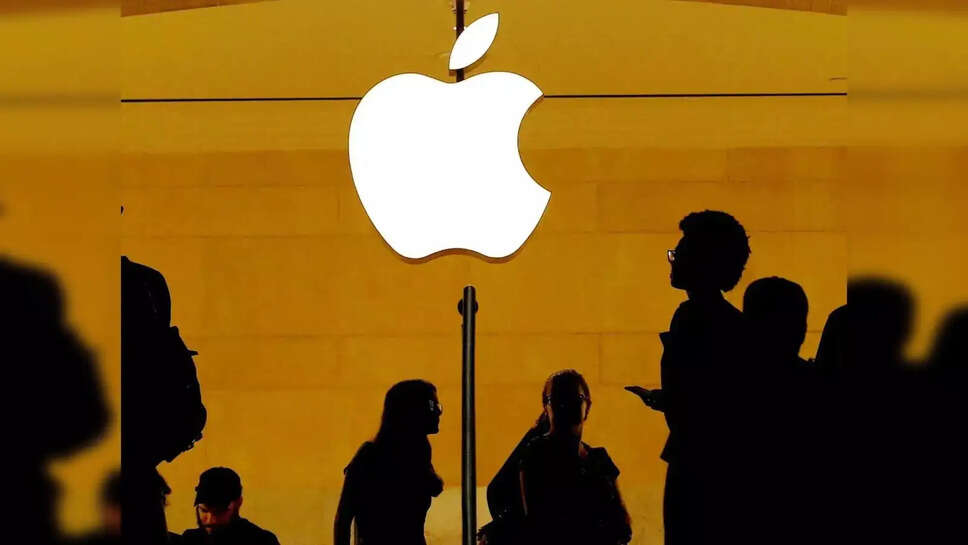Apple’s Secret AI Plans Hint at Chatbot Future

Apple, long known for its sleek hardware and tightly integrated ecosystem, appears to be quietly accelerating efforts to build its own ChatGPT-like artificial intelligence (AI) product. As the race to dominate generative AI heats up, the Cupertino-based tech giant is reportedly investing significant resources in developing a chatbot system and related large language model (LLM) technologies to rival those already offered by OpenAI, Google, Microsoft, and others.
While Apple has largely remained silent in the public AI arms race that exploded after ChatGPT’s release in late 2022, recent developments suggest that the company is no longer content to be a passive observer. With AI becoming the next battleground in tech innovation, Apple is working to ensure it doesn't fall behind.
Apple’s Quiet but Strategic Moves
Unlike competitors such as Google and Microsoft, which have made splashy announcements, acquisitions, and integrations of AI into their search engines, office software, and cloud platforms, Apple has taken a far more reserved approach. But insiders and industry reports suggest that Apple has been quietly building foundational technologies for years, focusing particularly on privacy-preserving machine learning, natural language processing (NLP), and on-device AI.
At the center of this effort is Apple’s internally developed LLM, codenamed “Ajax,” which reportedly powers an experimental chatbot referred to by Apple engineers as “Apple GPT.” Though the company hasn’t officially confirmed the product, leaks suggest that a small team has been testing the model internally.
Unlike ChatGPT, which runs on the cloud and collects vast amounts of data to improve its model, Apple’s AI strategy is said to emphasize on-device processing — a move consistent with its longstanding commitment to user privacy. This presents both a challenge and a differentiator. While it limits the data the model can train on, it also offers users more control and protection from data leaks and misuse.
Pressure to Catch Up
Apple’s move comes amid mounting pressure to match the AI capabilities of its rivals. Microsoft’s aggressive integration of OpenAI’s tools into Bing, Office, and Azure has reinvigorated the company’s software dominance. Google has launched its own models, including Gemini, and Meta is releasing open-source LLMs like LLaMA to great acclaim in the research community.
Even smaller players and startups have found success in the AI chatbot space, creating niche applications and tools that now appear on millions of devices. Meanwhile, Apple’s AI offerings have mostly remained limited to behind-the-scenes tools such as predictive typing, photo sorting, Siri’s basic functions, and health monitoring.
The disparity has become increasingly noticeable as generative AI becomes a more central part of user experience across platforms. From writing emails to generating code, summarizing documents, or even creating images and music, AI is now at the forefront of innovation. And Apple, whose iPhones and Macs remain central to the lives of millions, risks losing its technological edge if it doesn’t catch up quickly.
Siri’s Reinvention May Be Key
A likely path for Apple’s AI strategy is the complete overhaul of Siri — the voice assistant that once represented the future of interaction but is now widely seen as outdated and limited. Despite being one of the first mainstream digital assistants, Siri has fallen behind in functionality compared to Google Assistant or even Amazon’s Alexa, let alone the generative abilities of ChatGPT.
Reports suggest Apple may be working to integrate its LLM into Siri to give it more conversational intelligence, contextual memory, and reasoning capabilities. This could turn Siri from a command-based voice tool into a powerful assistant capable of carrying nuanced, human-like conversations and executing complex tasks — like booking appointments, summarizing emails, or offering writing suggestions — directly on-device.
If successful, this would radically transform the Apple ecosystem, embedding AI deeply into iOS, iPadOS, and macOS interfaces.
Hardware Meets AI: A Competitive Advantage?
Apple's advantage in the AI race may lie in its tight hardware-software integration. Unlike Google or Microsoft, which must design AI features for a fragmented ecosystem, Apple controls the entire stack — from the chips inside its devices to the operating systems and app environments.
Its latest M-series chips and A-series mobile processors are designed with machine learning cores (Neural Engines) capable of high-speed, low-power AI computation. This could allow Apple to run sophisticated LLMs directly on iPhones or Macs without needing to stream from a server — enabling faster response times and greater user privacy.
With the expected rollout of more AI-focused features in future iPhones and Apple Watches, Apple may turn its hardware into a personalized AI hub, capable of analyzing health trends, summarizing messages, offering suggestions in real-time, and even generating creative content — all within the device itself.
AI Without Compromising Privacy
What truly sets Apple apart is its emphasis on privacy. The company has built its brand on protecting user data, and this ethos is likely to extend into its AI products.
While ChatGPT and similar tools rely on cloud-based processing that collects and stores user interactions, Apple’s AI approach aims to ensure that personal data never leaves the device. This privacy-first model could appeal to users wary of surveillance, data mining, and cybersecurity risks.
However, this approach also introduces challenges: building a powerful LLM that operates within the constraints of user devices, without cloud support, is a massive technical hurdle. Whether Apple can match the performance of GPT-4 or Gemini under these constraints remains to be seen.
The Bigger Picture: Apple's AI Future
Apple CEO Tim Cook has acknowledged the importance of generative AI in recent investor calls, suggesting that the company is investing heavily in this space — though, as always, without revealing too much. Analysts believe that the company could unveil its first generation of AI-powered features as soon as 2026, with gradual rollouts beginning in iOS 19 and macOS 16.
Potential use cases include AI-assisted writing across Notes and Mail, intelligent app summaries in Safari, context-aware voice controls, real-time transcription and translation, personalized health suggestions, and even AI-powered creative tools for music, design, or video editing.
If Apple can blend AI seamlessly into its existing ecosystem, without compromising its privacy values or user experience, it could redefine how users interact with their devices — turning every iPhone, iPad, or Mac into a dynamic, AI-enhanced companion.
Late But Not Lost
Though Apple is a late entrant in the generative AI race, history shows that it often prefers to perfect a product before launching it. The iPhone wasn’t the first smartphone, nor was the Apple Watch the first wearable — but both redefined their categories.
If Apple succeeds in building a ChatGPT-like tool that is deeply integrated, privacy-focused, and runs natively on its devices, it could once again reshape the tech landscape. Whether it can do so in time to keep pace with fast-moving rivals remains the big question — but few doubt Apple’s potential when it finally chooses to act.
